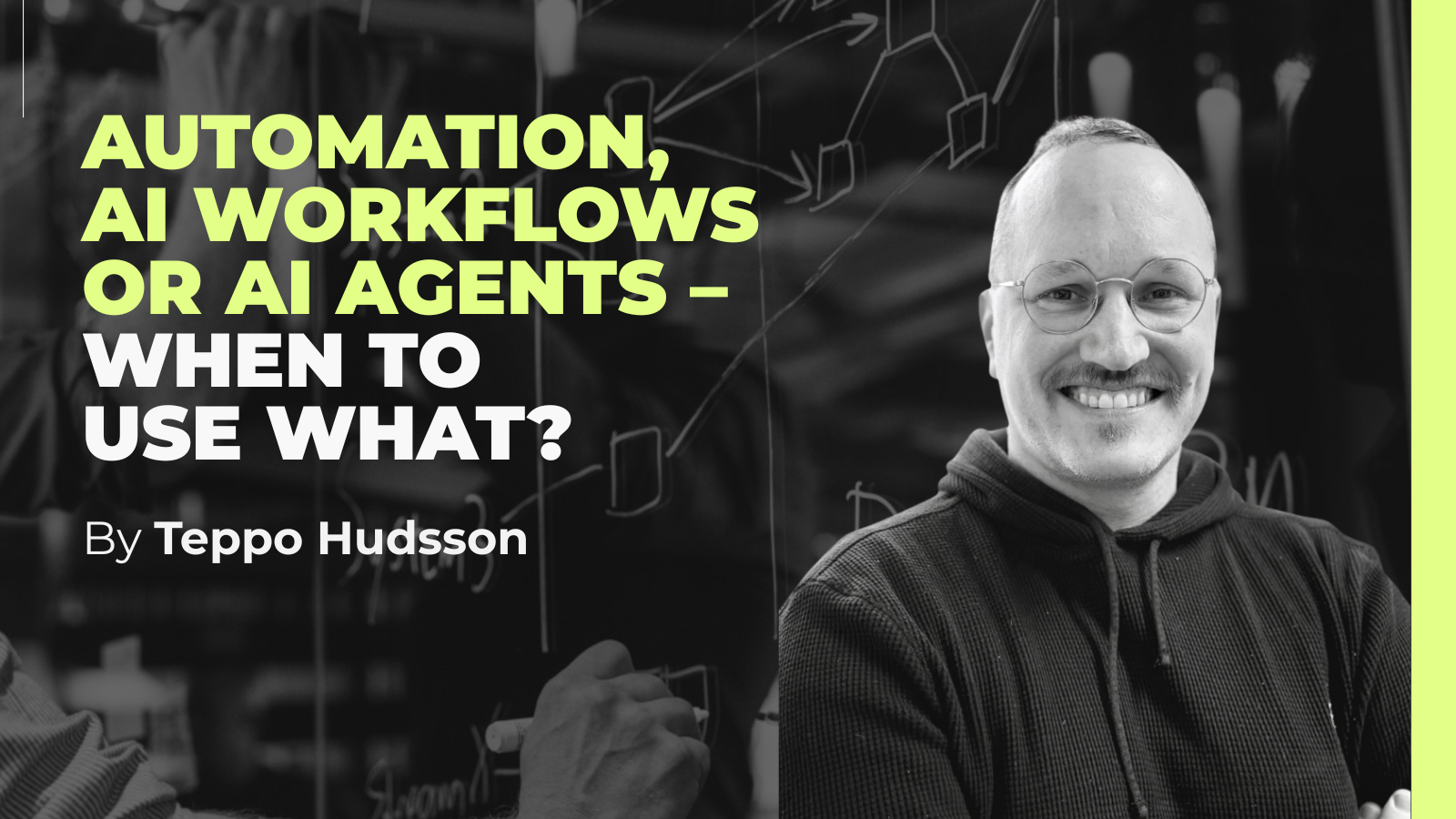Share to gain more social capita
Written by — Teppo Hudsson, AI Advisor

Learn the differences between traditional automation, AI workflows, and AI agents, and when to use each for smarter, more efficient business processes.
Written by — Teppo Hudsson, AI Advisor
Share to gain more social capita
Businesses are increasingly looking at AI for automation, but AI itself is not optimal for every process, let alone a fully autonomous AI agent. Before jumping on the AI bandwagon, it's crucial to understand the differences between traditional automation, AI workflows, and AI agents. Each has its strengths, weaknesses, and ideal use cases. In this article, I'll introduce you to each.
In 2025, everyone is talking about AI Agentic features and solutions. But before we delve deeper into the topic of automation, let's first look at a high-level comparison between these concepts.
What are the differences?
Which tasks can each handle best?
What are their strengths?
What are their respective weaknesses?

Automation refers to predefined, rule-based tasks executed automatically without AI. These systems follow strict logic and workflows without deviation. Think of robotic process automation (RPA), where a software mimics human actions in structured tasks like data entry or report generation.
Most manufacturing organizations are optimizing with the goal to iterate and produce mechanical versions faster than any of their competition. This is mainly due to the philosophy of:
These are, in general, processes that can be done asynchronously, independently, with only a “handover” process in between.
Requirements: A central check that all requirements are in place to execute automation.
Key features of automations:
Real-world examples of automations:

AI workflows introduce AI models, such as large language models (LLMs), into automated processes. Instead of following rigid logic, AI workflows can handle pattern recognition, unstructured data, and complex decision-making within a structured flow. For example, this could be a customer service chatbot that responds based on predefined decision trees but leverages a LLM for open-ended queries.
In generalization the workflows are a limited set of automations that are orchestrated by a core engine. Between 2017 - 2019, I built my own NLP (natural language processing) engine with the technology concepts used at that time (Word2Vector), and utilized this exact concept: core engine that organizes different flow-points to build dynamic discussions, still within certain predefined workflows.
Some components in modern playbooks are:
1. Prompt change

2. Routing

3. Parallelization

4. Orchestrator-worker

5. Evaluator
%20(1).png?width=900&height=180&name=In%20(1000%20x%20200%20px)%20(1).png)
Requirements: A predefined set of flows that can be chosen freely by AI logic.
Key features of AI workflows:
Real-world examples of AI workflows
AI agents go beyond automation and workflows by reasoning, planning, and acting autonomously. Unlike workflows that follow pre-set paths, agents can adjust to new information, create their own strategies, and execute complex tasks with minimal human input. Think of an AI-driven research assistant that gathers information, evaluates sources, and refines its responses iteratively.
A key component is an action-feedback loop that is running until all the tests are passed. The key here is to define what tests are needed and executed for a system to run the autonomous loop.
Requirements: Test cases to run the autonomous loop against.
.png?width=1000&height=200&name=AI%20workflows%206%20(1).png)
Key features of AI agents:
Real-world examples of AI agents:

Especially when evaluating Agentic AI, consider:
Everyone wants AI agents now, and when wondering if you should build an AI agent, just say yes! The world is moving towards those and a well working autonomous workflow is a life saver in many situations when your flow and focus is broken constantly. Its upsides can impact your business massively.
It just is not that easy to complete, and most likely it will require some extra work from the implementation team.
At Recordly, we believe in leveraging the right technology for the right job. Whether it’s simple automation, AI-enhanced workflows, or cutting-edge AI agents; the goal remains the same: smarter, more efficient processes that drive business value. And the best part: we can help you figure all that out.

Sources: